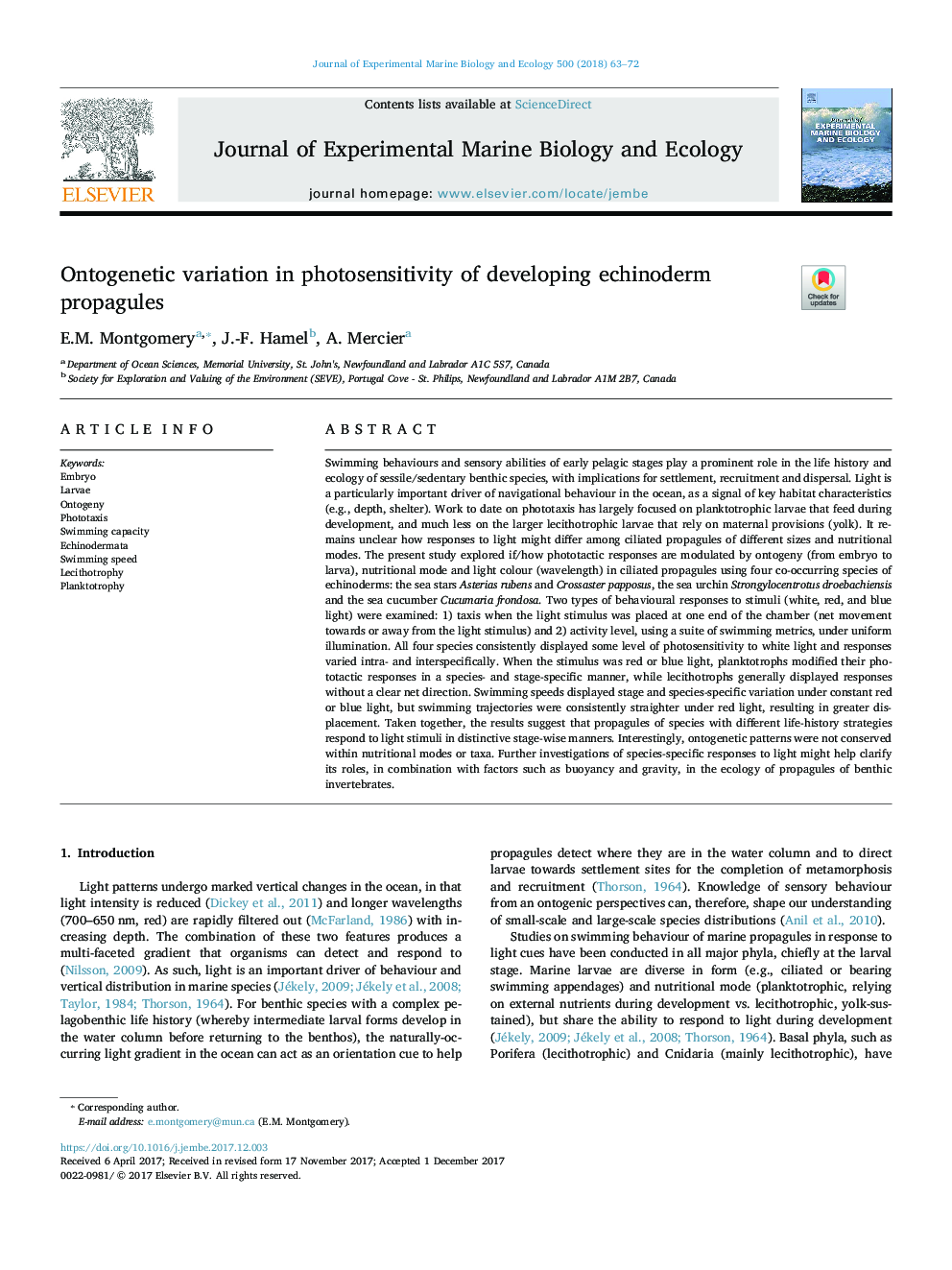| Article ID | Journal | Published Year | Pages | File Type |
|---|---|---|---|---|
| 8849001 | Journal of Experimental Marine Biology and Ecology | 2018 | 10 Pages |
Abstract
Swimming behaviours and sensory abilities of early pelagic stages play a prominent role in the life history and ecology of sessile/sedentary benthic species, with implications for settlement, recruitment and dispersal. Light is a particularly important driver of navigational behaviour in the ocean, as a signal of key habitat characteristics (e.g., depth, shelter). Work to date on phototaxis has largely focused on planktotrophic larvae that feed during development, and much less on the larger lecithotrophic larvae that rely on maternal provisions (yolk). It remains unclear how responses to light might differ among ciliated propagules of different sizes and nutritional modes. The present study explored if/how phototactic responses are modulated by ontogeny (from embryo to larva), nutritional mode and light colour (wavelength) in ciliated propagules using four co-occurring species of echinoderms: the sea stars Asterias rubens and Crossaster papposus, the sea urchin Strongylocentrotus droebachiensis and the sea cucumber Cucumaria frondosa. Two types of behavioural responses to stimuli (white, red, and blue light) were examined: 1) taxis when the light stimulus was placed at one end of the chamber (net movement towards or away from the light stimulus) and 2) activity level, using a suite of swimming metrics, under uniform illumination. All four species consistently displayed some level of photosensitivity to white light and responses varied intra- and interspecifically. When the stimulus was red or blue light, planktotrophs modified their phototactic responses in a species- and stage-specific manner, while lecithotrophs generally displayed responses without a clear net direction. Swimming speeds displayed stage and species-specific variation under constant red or blue light, but swimming trajectories were consistently straighter under red light, resulting in greater displacement. Taken together, the results suggest that propagules of species with different life-history strategies respond to light stimuli in distinctive stage-wise manners. Interestingly, ontogenetic patterns were not conserved within nutritional modes or taxa. Further investigations of species-specific responses to light might help clarify its roles, in combination with factors such as buoyancy and gravity, in the ecology of propagules of benthic invertebrates.
Keywords
Related Topics
Life Sciences
Agricultural and Biological Sciences
Aquatic Science
Authors
E.M. Montgomery, J.-F. Hamel, A. Mercier,
